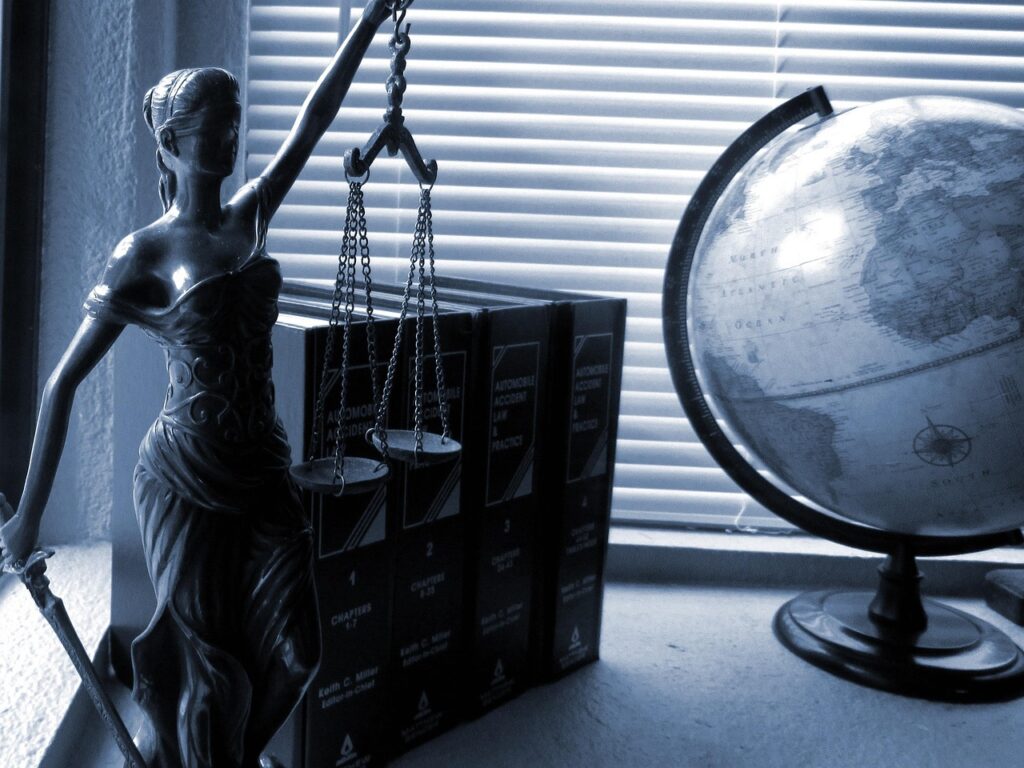Published On: 8th September, 2024
Authored By: Abdelrahman Waleed Salama
British University In Egypt
Fact:
In 2009 The government initiated the Aadhar system in Jan of the year 2009 with the aim of building the biggest unique identity system in the world. the Distinctive Identifier for BPL Families project began via the government of India. In a November 2012 Supreme Court case, retired Justice K.S. Puttaswamy claimed that Aadhaar breached people’s right to privacy and this is considered illegal. The applicant claimed before the 9-judge panel that the right to living with dignity is protected by Article 21 of the Constitution, making it unique and inalienable. The defendant maintained that the Constitution only acknowledged individual liberty, which included limited private rights.
Then, a 3 judge court bench heard the case and ruled on August 11, 2015, to forward it to a wider court bench. On July 18, 2017, a five-judge Constitution Bench ordered that the matter be reviewed by a nine-judge bench to determine if the Constitution includes an essential right to privacy.
In light of previous contradictory rulings from different courts, the nine-judge Supreme Court bench was asked to consider if the right to privacy was protected as an independent basic right.[1]
Issues:
-Whether the right to privacy is a basic right according to Article 21 of Part 3 of the Constitution of India, 1950.
– If the rulings in Kharak Singh v. State of U.P. and M P Sharma v. Satish Chandra, District Magistrate, Delhi are right under the law.
Rules:
– In the case of Sharma and Others v. Satish Chandra, District, it was decided that the Constitution does not safeguard the right to privacy.[2]
-Insofar as it holds that the Constitution failed to protect the right to privacy, the Court’s later decision in Kharak Singh (1962) is equally overruled
-Part 3 of the Constitution protects the right to privacy, which is a fundamental component of Article 21’s right to life and personal liberty. It is important to remember that this privilege is not unqualified, and the corpus of case law that followed the Kharak Singh case created the correct legal structure for this issue.
Analysis:
As times change, the law must change, and in no way can it remain static. According to the highest court, which is the Supreme Court, basic rights in India are an empty basket to which each generation adds something based on the experiences it has faced.
On the contrary, it seems that the matter has an element of entitlement and that the person wants something and this entitlement is excessive, like a basket containing everything that makes the life lived by the citizen valuable. The Supreme Court of India ruling in KS Puttaswamy v. Union of India is an important step for the liberation and freedom of men and women. This is a large victory for Indian civil liberties. The ruling comes from the world’s most powerful court an activist court that decides what happens to one-sixth of humanity[3].. A nine-judge court has finally put an end to the menace that MP Sharma and Kharak Singh presented. In the past few years, the Court has overturned these two outdated decisions, recognizing privacy in a variety of settings including bank accounts and illegal financial activities, marital relationships, and dietary preferences.
In the modern era, this position is deceptive and incorrect. Like other vital freedoms under Part 3, the Court also reasoned that privacy is not an absolute right. Justice Chandrachud states on page 264 that legislation that interferes with someone’s privacy must pass muster against the standard of lawful limitations on basic rights. Therefore, in the structure of Article 21, a private invasion must be justified by legislation that lays out a fair, reasonable, and just process. According to him, every infringement on an individual’s life or liberty must also satisfy three requirements: proportionality, which guarantees a reasonable relationship between the goals and the methods used to attain them, legally, which assumes the existence of law, and necessity, which is defined in terms of an valid governmental aim and objective.
The scope of privacy is greatly expanded by this decision, which intertwines it with other essential rights like the freedom of conscience, the freedom of assembly, and the freedom of occupation. Although the right to privacy has previously been detached from Article 21 by the Supreme Court (the Autoshankar case being the most notable of these instances), the right to privacy has never before extended beyond the bounds of Article 21 to violate other basic rights.
Puttaswamy case clarified privacy as a right to travel, a prerequisite, and an essential element for the enjoyment of other liberties. These days, ironically, privacy is a necessary condition for freedom of expression. The Puttaswamy case ruling upholds the right to privacy against both the commercial and government authorities. The State now has an obligation to save the citizens’ right to privacy against non-state entities that have amassed empires through economic espionage, in addition to against itself.
The decision clearly recognizes many extra privacy relatable to the issues that the Supreme Court would not have needed to address in the past. For example, the decision recognizes a person’s right to publicity, which includes control over how her name, likeness, or image is exploited for profits and how it is depicted in public. It also recognizes the right to be forgotten in the context of the digital era, which is the right to have content that has become outdated or useless eliminated from the public domain.
The scope of fundamental rights in Indian constitutional history has changed as a result of the current ruling. The Indian judiciary has shown remarkable care for freedom. The Indian government is given the opportunity to reconsider its data protection policy in light of both state interests and concerns about privacy.
Conclusion:
In the case of Justice K.S. Puttaswamy (Ret’d) and Anr v. Union of India and Ors, the judges established a precedent via global rules that cross national boundaries and age. This was demonstrated by their six unique and concurring rulings. With the rulling of the Supreme Court decision on the important privacy case, a lot more lawsuits can now be brought under this subject. Despite the fact that the Constitution does not expressly mention privacy, the court interpreted Article 21 and ruled that it is a basic right since it has historically protected numerous other rights.
The legal system in the nation of India must fall behind the acceptance of privacy as an essential and fundamental right of individuals. The Supreme Court’s ruling is fair and accurate, and given the advancements in information technology, privacy needs to be considered a basic right. The verdict is unambiguous: human dignity and privacy are inextricably interwoven. In this days, the right to privacy is inalienable. Owing to the world’s fast technological advancements, data protection is the government’s top priority. In addition to that, as privacy activists make use of the case to further the constitutional discussion of privacy in other nations, it is likely to have broader relevance.
The case at hand expands the scope of liberty of expression by upholding privacy as a natural right, as any challenge would go against a person’s fundamental right, guaranteed by the Constitution.
This will expand the scope of privacy to include government surveillance, data security, and freedom of religion. The record of 9 judge panels of the Apex Court rendered this ruling.
As so, it established a precedent that was binding on all courts until overturned by a larger bench. As a way to address these numerous questions, how future courts interpret the Puttaswamy case will serve as the real privacy litmus test
The retired judge in the Indian state of Karnakta, K.S., had challenged and questioned the principle of legitimacy of the idea of Adhar and said that this violates the principle of the right to privacy in humans. A panel of three judges found that the Indian Constitution protected the right to privacy and that a higher court needed to consider the case. In this case, the panel of nine judges reached a conclusion. On August 24, 2017, a 9-judge Supreme Court panel decided unanimously in Justice K.S. Puttaswamy v. Union of India and numerous other cases that every person has a fundamental right to privacy. This landmark decision set a precedent for future cases with similar concerns with India’s private rights. It also highlighted how important it is to protect people.[4]
The Supreme Court of India first formally recognized the rights of the gay and lesbian community with this decision. The decision acknowledged the ability to choose one’s sexual orientation in addition to the right to privacy. The 2017 case Navtej Singh Johar v. State of India, which linked privacy issues to gay and lesbian community issues and contested Section 377 of the Indian Penal Code, was sparked by this decision.[5]
Reference(s):
[1] JUSTICE K.S. PUTTASWAMY VS. UNION OF INDIA, (2017) 10 SCC 1
[2] Sharma And Others vs Satish Chandra, District, 1954 AIR 300, 1954 SCR 1077, AIR 1954 SUPREME COURT 300, 56 PUN LR 366
3 People’s Union Of Civil Liberties vs Union Of India & Anr on 13 March, 2003 AIR 2003 SUPREME COURT 2363, 2003 AIR SCW 2353,
[4] Unacademy, ‘An overview of Justice K. S. Puttaswamy (Retd.) and Anr. vs Union of India’ https://unacademy.com/content/upsc/study-material/polity/an-overview-of-justice-k-s-puttaswamy-retd-and-anr-vs-union-of-india/ accessed 13 July 2024.
[5] Justice K.S. Puttaswamy (Retd.) v Union of India (2017) 10 SCC 1 (SC)< https://translaw.clpr.org.in/case-law/justice-k-s-puttaswamy-anr-vs-union-of-india-ors-privacy/ > accessed 10 July 2024




